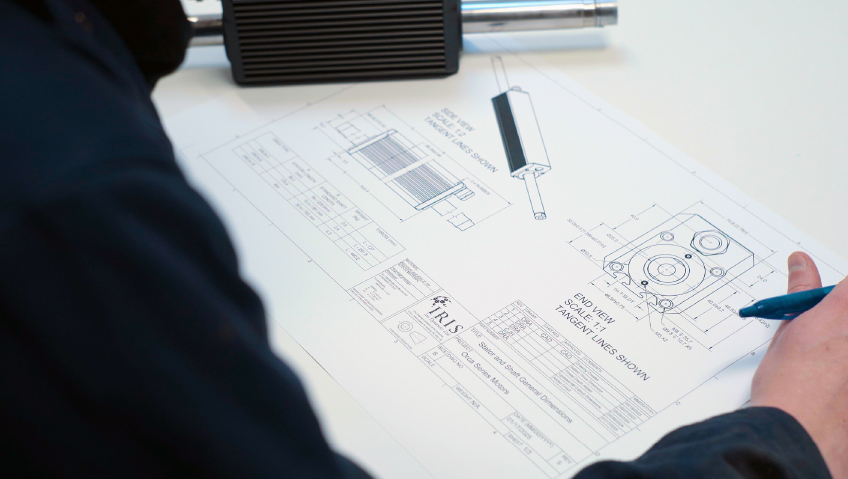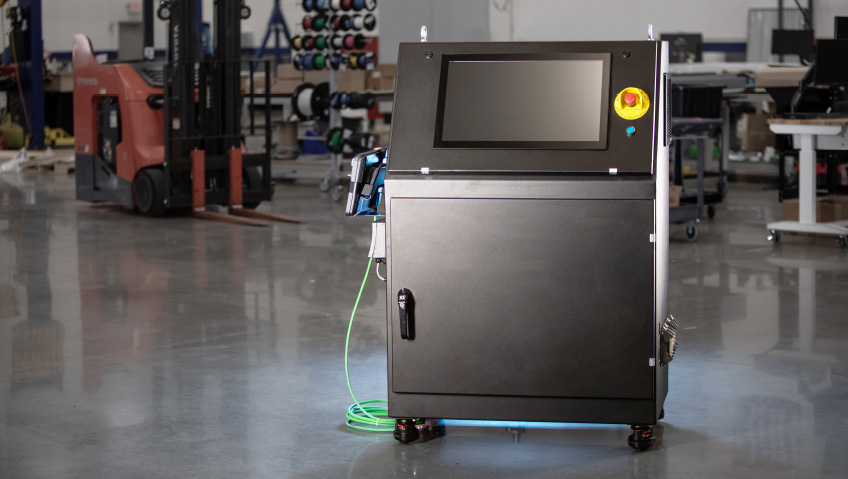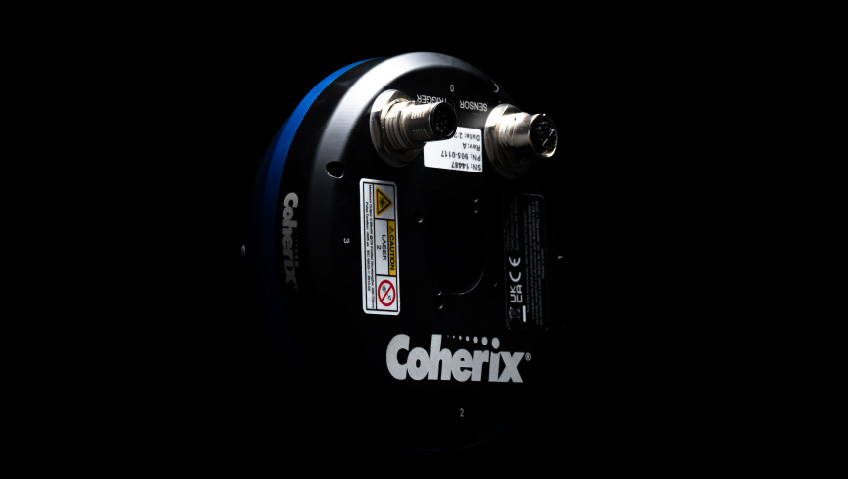Since its founding in 2012, Iris Dynamics has evolved from a niche aerospace supplier to a cutting-edge leader in motion control technology. Originally focused on commercial flight simulation, the company developed advanced force feedback systems to replicate the tactile experience of piloting real aircraft. Over time, Iris Dynamics expanded its reach into industrial automation, robotics, and semi-autonomous vehicles. Today, its smart linear motors are transforming industries by integrating intelligence, adaptability, and ease of use in ways traditional motors simply cannot.
“The company was founded to improve flight simulation,” explains Patrick McFadden, CEO of Iris Dynamics. “In an aircraft, the amount of force you feel on your fingertips conveys a lot of important information back to the pilot. If you want a good training scenario in a simulator, you need to replicate those forces accurately.” That necessity led to the development of a core technology that would later prove invaluable across multiple industries.
For nearly a decade, Iris Dynamics operated as a specialized solutions provider, creating custom control loading systems for aerospace clients. However, a shift began around 2018-2019, as the company recognized the broader potential of its technology. By 2022, the transformation was complete, and Iris Dynamics became a standard products company, focusing on mass-producing intelligent linear motors for use across various industries.
Unlike conventional motors, Iris Dynamics’ products incorporate force controllability, local processing, and full integration of components like motor drivers and controllers. This approach reduces complexity for engineers and manufacturers, making it easier to implement advanced automation solutions.
“We’re not just a motor manufacturer,” says McFadden. “We combine motors, motor drivers, controllers, and sensors into a single package, removing the need for multiple vendors and saving engineering time. That integration unlocks entirely new possibilities.”
This technological advantage is particularly valuable in manufacturing and industrial automation, where efficiency and precision are paramount. The company’s motors eliminate the need for separate motor drivers, load cells, and control cabinets, simplifying installation and drastically reducing setup time.
Daniel Alexander, Head Mechanical Engineer, highlights the transformative potential of the company’s technology. “We’re enabling companies to create systems that were previously impractical or too expensive to implement,” he says. “Our motors don’t just move things; they sense, adapt, and react in real time, which opens doors for entirely new types of automation.”
A major strength of Iris Dynamics’ approach is back driveability, the ability of a motor to be pushed or pulled with programmed/adjustable resistance, allowing for smoother motion and safer interactions in collaborative robotics. This feature is particularly useful in applications where precision and human interaction are essential, such as medical devices, robotic assembly lines, and even motion platforms for stabilization and product design testing.
Kyle Hagen, Executive Vice President, explains how the company is addressing a major bottleneck in automation adoption. “One of the most compelling advantages of our smart linear motors is their plug and play design. By integrating the drive, sensors, and logic controllers into a single unit, smart motors significantly reduce commissioning and development time, allowing engineers to focus more on production rather than configuration, making them especially valuable for organizations without extensive motion control expertise.”
Hagen goes on to address other adoption barriers: “One of the biggest challenges in automation isn’t just hardware; it’s software complexity,” he explains. “Our motors reduce the need for specialized programming expertise because they work out of the box with platforms like MATLAB, LabVIEW, Unity, and Unreal. That means developers and engineers can integrate our systems quickly, without spending months troubleshooting.”
This seamless compatibility extends Iris Dynamics’ reach beyond traditional industrial applications. Companies in robotics, (semi)-autonomous vehicles, industrial automation, and even defense are leveraging the company’s technology to create innovative new systems.
Iris Dynamics’ ability to control not only position and speed, but force as well, is a game-changer. “Think of it as a programmable spring,” McFadden explains. “You can tell our motors to apply a specific force, and they’ll maintain it, even if they’re being backdriven. That’s something traditional motors just can’t do.”
This level of control is revolutionizing robotics, where precise and compliant force feedback is critical for tasks like assembling delicate components or handling variable loads. The company’s technology is also making waves in warehouse automation, enabling more adaptive and efficient systems for sorting and transporting goods.
Alexander elaborates on this impact: “We’re seeing a significant shift in how industries approach motion control. Traditional motors rely on rigid programming and pre-set paths, but our technology allows for dynamic adjustments in real time. That means robots can respond to changes in their environment, improving safety and efficiency.”
As Iris Dynamics continues to grow, its commitment to innovation remains strong. The company manufactures all its products locally and has a near-equal split between its hardware manufacturing and software development teams. This balance ensures it can continuously enhance its products with new features and improvements.
Hagen points out another key advantage of such an approach: “Because we integrate hardware and software so closely, we’re able to achieve the performance of more expensive and complicated systems with a simpler product,” he says. “Our customers benefit from a smaller, cheaper, and simpler solution, which keeps them ahead of their competition.”
“We’re trying to breathe new life into this industry,” says McFadden, underscoring the long-term vision for the company. “Traditional motion control hasn’t changed much in decades; by integrating everything into a single intelligent system, we’re not just improving existing solutions, we’re creating entirely new possibilities.”
With applications spanning from industrial automation to cutting-edge robotics, Iris Dynamics is proving that intelligent motion control is more than just an upgrade, it’s a revolution. As companies worldwide seek smarter, more efficient ways to build and automate, Iris Dynamics is at the forefront, pushing the boundaries of what’s possible.
And the company’s success in industrial automation and robotics is only the beginning. Iris Dynamics is actively exploring new frontiers where intelligent motion control can make a difference. Medical robotics, for instance, is an area where precise force control is essential. “We’re working on applications where our motors can provide haptic feedback for surgical robots, allowing for more delicate and precise procedures,” says Alexander. “These technologies could change how surgeries are performed, making them safer and more efficient.”
Additionally, rehabilitation devices using Iris Dynamics’ motors can provide patients with adaptive resistance training, making physical therapy more effective and personalized.
With roots in aerospace, the company is also finding new ways to reintroduce its technology to aviation and defense. From advanced flight control systems to adaptive landing gear, Iris Dynamics’ motors provide enhanced reliability and responsiveness. “There’s a huge potential for improving aircraft control mechanisms, making flights safer and more energy-efficient,” McFadden notes.
The company’s technology is also in use in various unmanned military vehicles ranging from land to air to sea.
“We’re always looking for new ways to apply our technology,” says McFadden. “Whether it’s in medical robotics, aerospace, new industrial processes, or beyond, our goal is to provide smarter, more adaptive solutions that redefine how motion control is used across sectors.”
By continuously innovating and adapting to industry needs, Iris Dynamics is not only transforming motion control but also shaping the future of automation itself. Its journey from aerospace simulation to industry-wide disruption is a testament to the power of intelligent engineering and the limitless potential of groundbreaking technology.






